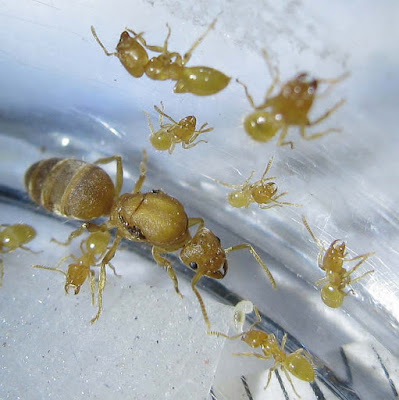One of the smaller species this Pericapritermes has soldiers that measured slightly below 6 millimeters.
Taxonomy
No rank: cellular organisms
Superkingdom (Domain): Eukaryota
No rank: Opisthokonta
Kingdom: Metazoa
No rank: Eumetazoa
No rank (Subkingdom): Bilateria
No rank (Branch): Protostomia
No rank (Infrakingdom): Ecdysozoa
No rank (Superphylum): Panarthropoda
Phylum: Arthropoda
No rank (Subphylum): Mandibulata
No rank: Pancrustacea
Subphylum (Epiclass): Hexapoda
Class: Insecta
No rank (Subclass): Dicondylia
Subclass (Infraclass): Pterygota
Infraclass: Neoptera
No rank: Polyneoptera
No rank (Superorder): Dictyoptera
Order: Blattodea
Superfamily: Blattoidea
No rank: Termitiodea 1912919
No rank: cellular organisms
Superkingdom (Domain): Eukaryota
No rank: Opisthokonta
Kingdom: Metazoa
No rank: Eumetazoa
No rank (Subkingdom): Bilateria
No rank (Branch): Protostomia
No rank (Infrakingdom): Ecdysozoa
No rank (Superphylum): Panarthropoda
Phylum: Arthropoda
No rank (Subphylum): Mandibulata
No rank: Pancrustacea
Subphylum (Epiclass): Hexapoda
Class: Insecta
No rank (Subclass): Dicondylia
Subclass (Infraclass): Pterygota
Infraclass: Neoptera
No rank: Polyneoptera
No rank (Superorder): Dictyoptera
Order: Blattodea
Superfamily: Blattoidea
No rank: Termitiodea 1912919
Family: Termitidae 46569
Subfamily: Termitinae 92738
Group: Pericapritermes 1934616
Updated: 2022 01 27
Posted: 2016 12 12
© 2009 – 2022 Quah. All rights reserved.























































